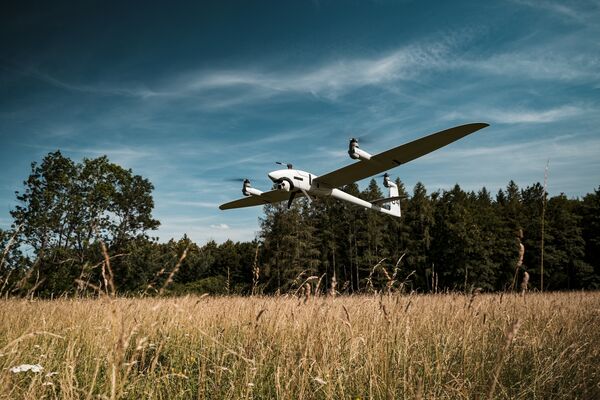
Quantum-Systems Vector UAV has been ordered for a third time by the Ukrainian Ministry of Defence. (Quantum-Systems)
Ukraine has ordered 300 additional reconnaissance unmanned aerial vehicles (UAVs) from German-based Quantum-Systems.
An announcement by the company on 31 May stated the order would be the third placed by Ukraine for the Vector electric vertical take-off and landing (eVTOL) UAV since August 2022.
A Quantum-Systems spokesperson confirmed to Janes the order was funded by the German government.
Overall, Ukraine has received 438 Vector UAVs, with 105 ordered in January 2023 and 33 in August 2022 – funded by the German government. The company is also in the process of opening a facility in Ukraine to offer user training and maintenance support.
The Vector eVTOL UAV is suitable for intelligence, surveillance, and reconnaissance (ISR) operations, including border patrol, search-and-rescue, and battlefield surveillance. The system has a wingspan of 2.8 m, a maximum take-off weight of 7.4 kg, an endurance of up to two hours, and can be fitted with either a NextVision Nighthawk2-UZ or Trillium Engineering's HD40-LV electro-optical payload.
Vector has been used extensively on the Ukrainian battlefield, where it has “proven to be an asset for military intelligence, surveillance, and reconnaissance operations”, the company said earlier.
Looking to read the full article?
Gain unlimited access to Janes news and more...
